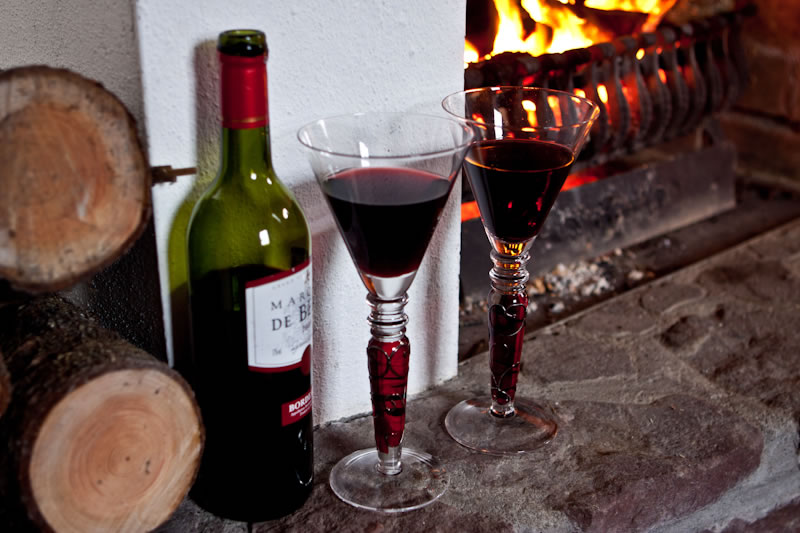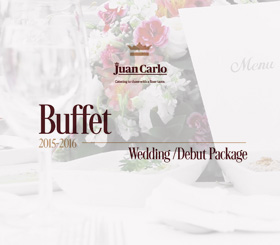What do you need to look out for in faulty wine?
- With corked wine, check to see if the taste is odd.
- With cooked wine, check for any leaks around the cork. That means that your wine has been exposed to extreme heat, causing the wine to expand.
Wine is a special drink best served during equally special occasions, which is also the reason why they are prominent on the menus of the finest corporate and wedding catering in Manila. It exudes class and is also best paired with a variety of meals no matter what the occasion. Just as long as one practices moderation when drinking wine, it’ll be their ideal beverage that’s fit for anything.
While it’s not as integrated into the local palate as it is in other countries such as Italy or Spain, wine does have its place in the Philippines. Plenty of Filipinos appreciate good wine, and it is common enough that it can easily be obtained from a local liquor store or a nearby supermarket. In fact, in many drinking sessions around Manila, wine is always an option for those interested in it, despite its rare presence on the drinking table. Its intense, yet fruity flavor is enough to entice anyone to make it a staple in their frequent drinking sessions.
If you are interested in becoming a wine connoisseur, knowing how to spot a possible faulty wine becomes an integral skill (in addition to knowing how to pair wine with cheese). The next time you’re attending a lively corporate event, mingling at a classy house party, enjoying someone’s wedding catering in Manila, or just enjoying a good glass (or bottle) of it, always remember that identifying bad wine is very important.
Defective wine is surprisingly rather common; while manufacturers take special care to make a perfect batch every time, the same amount of care is sometimes not applied by the distributors and this often leads to bad bottles. Many bottles may be exposed to harmful elements from the outside, causing what’s on the inside to have some drastic changes, usually in a bad way. If you wish to know how to use this skill, read on to find the telltale signs of possibly bad wine and save yourself from the trouble. You may just be surprised at what you can find and how you can do it:
Corked wine
It’s common practice to use cork as caps for wine bottles, although there exist screw-capped varieties as well. The good thing about the latter is that there’s no chance of cork taint – that’s when the cork is infected with a fungus that produces 2,4,6-trichloroanisole (often abbreviated as TCA). This chemical often causes the addition of bad tastes to the wine, thus ruining its meticulously crafted blend. Cork taint has always been a long standing problem in the wine industry, and so far the only way to avoid it is to use screw caps, beer bottle caps, or sterilized cork; up to 5% of all bottles of wine are affected by TCA.
Avoid getting corked wine and opt instead for bottles with screw caps or man-made corks. Otherwise, just cross your fingers and hope you don’t get a bad bottle every time you purchase a traditionally corked one.
Symptoms of corked wine include fruitlessness and an unbalanced taste; severely tainted wine on the other hand will emit more noticeable signs. Unpleasant aromas – similar to the scent of wet cardboard or mushrooms – will permeate the brew and make it nigh undrinkable; though by the time this happens you’ve probably (hopefully) detected its corkiness and have disposed of it.
Cooked wine
This is another generally known problem when it comes to wine as poor storage conditions and equally poor handling is a common issue with distributors. Exposing wine to high temperatures (especially for a prolonged time) will undoubtedly lead to it getting cooked. On the other hand, retailers are no less guilty of bad care; oftentimes wine shops – notably those in temperate climates – are much warmer than they should be.
With that said, wine that’s used for cooking, especially when heated, should be kept in the kitchen, not in your glass to be drunk. Wine shouldn’t be heated as it causes the liquid to expand – this may force the cork from the neck of the bottle, pushing it up under the capsule. That, or the expansion may cause the wine itself to leak around the cork. In the contrary, cooling the liquid will cause it to contract, and this may lead to air seeping into the bottle from around the cork – this will cause a bigger problem: oxidation.
In order to avoid possibly cooked bottles of wine, watch for the height of the cork. Never buy a bottle where the top of the cork doesn’t sit level or below the level of the bottle’s mouth. A small protrusion is usually a sign of cooked wine. The level of liquid inside the bottle is also another good indicator – make sure that it isn’t too low and that it’s well into the neck.
Should you have missed these little signs, you’re sure to taste the “cooked” flavor in the wine itself. There’ll be no freshness to the fruit aromas or flavors; everything will end up tasting like stewed prunes. This kind of wine also tends to seem thin without any body or character. Cooked wine is slightly difficult to identify just by sight – especially when it’s not a severe case, but you’ll know it when you taste it. Though not unsafe, it won’t taste very good.
Key Takeaway
Having the skill to spot wine that’s bad can be essential to your drinking needs. Think about it, you’re entertaining your friends on a good night and all of a sudden, you and your guests notice an odd taste with the wine in your glasses. This skill can prevent that from ever happening as good wine always spells a good celebration of any sort. Just as long as you have the taste for good wine and a remarkable palate to match, you’ll be amazed at how easy it can be to spot the difference between wine that’s excellent to taste and wine that seems a bit odd in taste.
But wait, there’s more! Aside from these problems, there are a couple more faults to look out for. Make sure to check them out in our next blog post.






